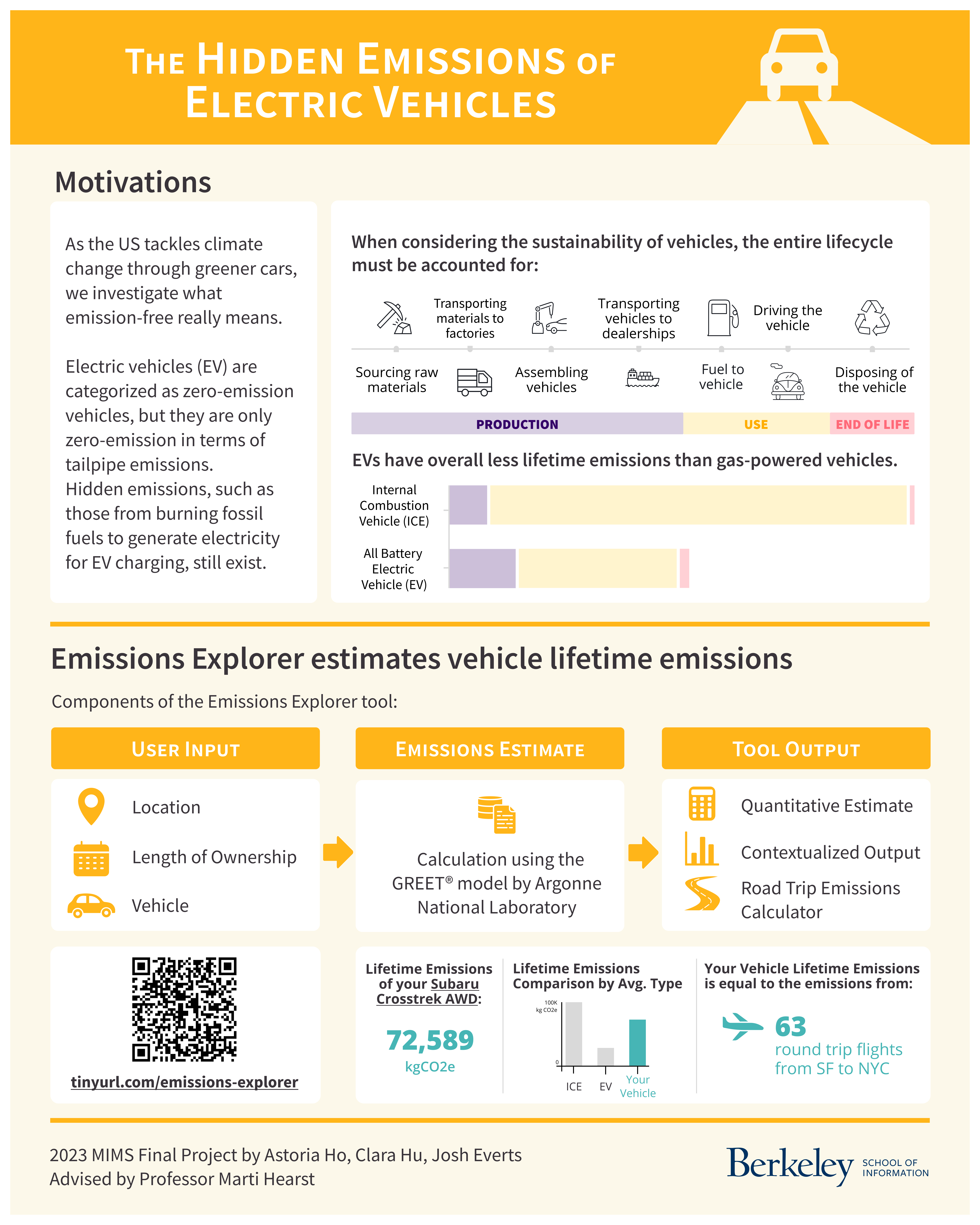The Hidden Emissions of Electric Vehicles
Deliverables
Introduction
Our project, The Hidden Emissions of Electric Vehicles, examines the sustainability of zero emissions vehicles and highlights barriers to EV adoption and use in California. Through an interactive website and vehicle emissions tool, called Emissions Explorer, we break down how and why EVs still emit, and let people explore how different factors – charging location, vehicle type, and mileage – all impact emissions.
Our Emissions Explorer allows a user to input almost any vehicle (gas, hybrid, or electric) and outputs the lifetime emissions of that vehicle, along with useful context about how that vehicle compares to its peers. We built our emissions model calculations using data from the GREET model, created by Argonne National Laboratory (ANL), and vehicle emissions and weight data from the EPA. Emissions Explorer models the production, use, and end-of-life emissions for a vehicle, and is the first tool to integrate these calculations into a digestible, consumer-facing product.
Motivation
The transition towards zero-emission vehicles and electrification to reduce emissions has become a key topic in environmental policy. In 2020, California Governor Gavin Newsom signed Executive Order N-79-20 which mandates that by 2035, 100 percent of all sales of new passenger cars and trucks in California be zero-emission. In 2021, the White House published their long-term strategy to reach a goal of net-zero emissions by 2050. Their plan includes decarbonizing electricity, transitioning to clean transportation fuels, and scaling CO2 removal.
Our project intends to inform people about what “zero emission vehicles'' are, what makes them zero-emission, and what the sustainability of these vehicles are. We explain the concepts of a vehicle’s lifetime emissions and the connection between the electrical grid and electric vehicles










